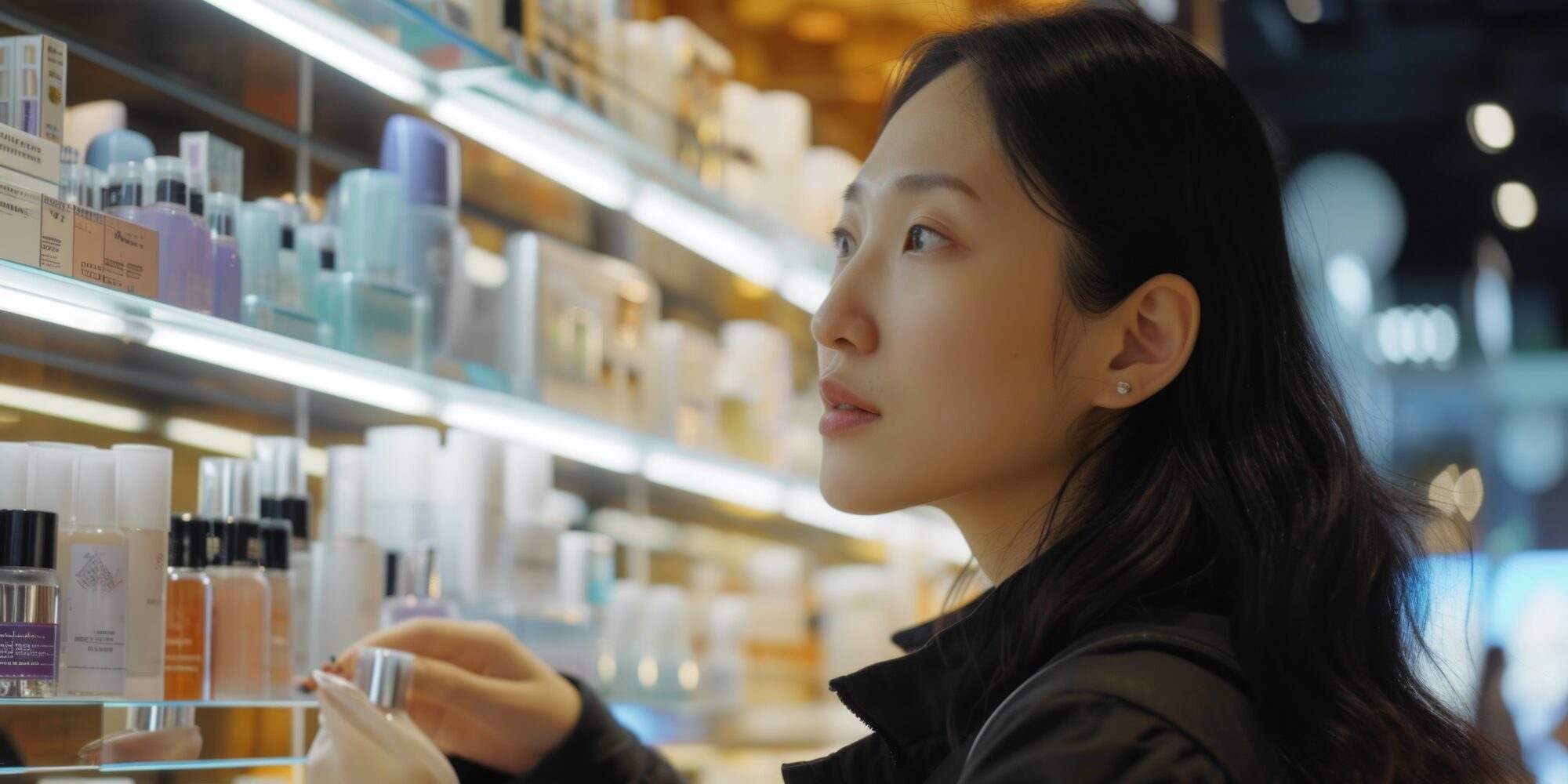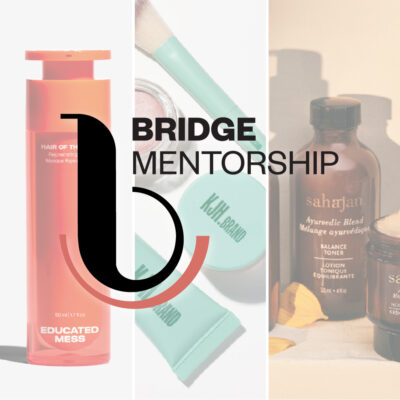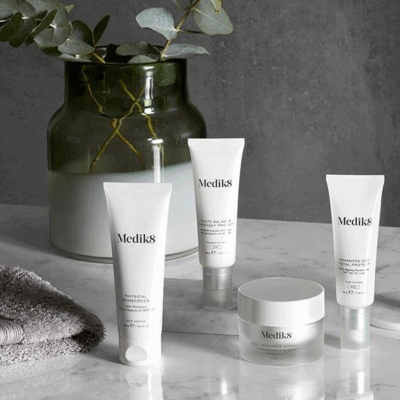
The Tricky Marketing Transition From Driving DTC Sales To Supporting Retail Success
We’ve done two recent No Stupid Questions stories on marketing costs related to new products. As a follow-up to those stories, Brand Botany founder Lesley McIntosh, a fractional CMO and advisor to emerging beauty brands, suggested we examine the marketing strategies of brands going from direct-to-consumer distribution to retail.
Based on questions she proposed, for this edition of our No Stupid Questions series exploring topics relevant to indie beauty, we asked 13 beauty brand founders and executives the following: How did your marketing evolve when your business went from direct-to-consumer distribution to retail? Did your budget increase? Are you shifting the mix or layering in new channels?
- Emily Yeston Co-Founder and CEO, Doré
When we entered Ulta Beauty last summer, it marked a meaningful shift in how we approached our marketing strategy. Our focus has been on investing thoughtfully in retail marketing to ensure the economics of this growing channel remain sustainable for the business.
We’ve entered a testing-and-learning phase, evaluating which levers within the Ulta Beauty ecosystem are most effective for our brand while also adjusting our owned channels to better support the partnership. We’ve begun running Ulta-specific digital media campaigns to drive awareness, experimented with hyper-targeted out-of-home placements, and I personally visited over 100 stores last fall to gain firsthand insight.
That experience underscored the importance of in-store execution. We saw a 20% sales lift in the doors I visited. As a result, we’ve increased our investment in field team support, in-store events and education, initiatives that have proven essential to driving conversion.
In fact, we’ve seen a 500% increase in performance in doors where we’ve deployed dedicated field support. We see all of these efforts working cohesively together to drive long-term growth for Doré in retail.
- Nhu Le Founder, Finding Ferdinand
When we expanded from direct-to-consumer into retail, our marketing approach stayed rooted in the same brand voice and values, we simply extended the message. The main shift was in the call to action. Rather than driving customers solely online, we could now invite them to experience our products in person at retail locations.
We continued using our existing channels like social media, but with new content that highlighted in-store discovery. Our marketing budget did increase, guided by retailer forecasts, but we don’t treat DTC and retail as separate silos. We look at the entire customer journey and focus on showing up wherever they are online or in-store. For us, a win is a win. Whether they shop through our site or a retail partner, we just want to make it easier for them to find and fall in love with our products.
We’ve been layering in new channels and shifting our mix to support retail growth. We introduced in-store eventing as a key part of our strategy, bringing our brand to life in physical spaces, creating moments of discovery and allowing us to connect with customers in person, which has been incredibly valuable for building trust and loyalty.
We also partnered with Credo Beauty on co-op campaigns, which yielded nearly 3X returns in online sales. In-store, the results exceeded expectations. We surpassed our first-month sales forecast by 415%. These efforts showed us that combining digital reach with in-person experiences can significantly amplify impact, especially when supported by the right retail partners.
- Christin Powell Co-Founder, Kinship
Expanding into retail required a shift in our marketing strategy, balancing direct-to-consumer efforts with increased retailer support. Our budget increased by approximately 30%, with more resources allocated toward in-store activations, retail media and shopper marketing.
While we continue to invest in digital acquisition and social engagement, we've layered in retail-specific initiatives (Credo/Sprouts), including co-branded campaigns, point-of-sale promotions and in-store experiences.
Results have been promising. Our retail sell-through rates have consistently outperformed initial projections, and our omnichannel approach has strengthened brand recognition.
- Nichola Gray Co-Founder and CEO, Kate McLeod
As a smaller brand expanding into retail, our marketing strategy has remained focused on building brand and product awareness holistically rather than by channel because we believe a strong brand lifts all points of distribution. Our budget increased by 30% YoY in 2024 and is set to grow another 40% in 2025, with the biggest areas of investment in influencer marketing and paid media.
Influencer campaigns, especially macro partnerships supported by ShopMy gifting campaigns and Opportunities, have outperformed retailer-specific spend, which is typically more limited for smaller brands anyway. At the same time, we’ve been able to scale paid media efficiently by investing in higher quality creative and increasing output through whitelisting influencer content.
Substack has also become a key channel, now our No. 1 source of referral traffic to dot-com. This brand-first approach is driving strong results. Year-to-date, we’re up over 70% YoY at Sephora and over 60% on our own site.
- Glynn Pogue Co-Founder, Blue Water Girls
When we expanded from direct-to-consumer to retail, our marketing strategy evolved significantly to support both brand awareness and sell-through across multiple channels. To drive visibility across our retail partners and our own website, we increased our marketing budget by 30%, focusing on layered efforts that would create a consistent brand presence online and in-store.
In addition to retail expansion, we also launched on Amazon to diversify our revenue streams and avoid overdependence on a single channel, especially as consumer spending habits fluctuate. This required further investment as marketing spend on Amazon is essential for discoverability and conversion. We ramped up our efforts in paid search, sponsored products and DSP ads to boost performance on that platform.
Overall, this shift has paid off. We’ve seen a 50% increase in total sales since increasing our marketing investment. Our current marketing mix now includes a combination of paid social (Meta, TikTok), Amazon ads, influencer partnerships, email marketing and targeted digital campaigns.
- Sahar Rohani Co-Founder and CEO, Soshe
We entered Credo Beauty through an exclusive partnership in 2024 and were aware that the Credo client is highly educated, ingredient-conscious and deeply loyal to products and brands. To resonate with this client, we built a dedicated team of highly educated Soshe brand reps in-store.
This approach helped us control costs and opened a valuable feedback loop that allowed us to hear directly from Credo clients, which led to the launch of successful shade extensions and the first-ever Credo Clean Tubing Mascara.
We increased our marketing budget to support the partnership, primarily reallocating funds from paid ads into sampling, in-store education and events with Credo. While the upfront investment was significant, we’ve seen strong returns, not just in sales, but in brand awareness and loyalty.
- Tim Hollinger Co-Founder, Bathing Culture
We’re still mostly DTC, but our wholesale business has been growing fast. We brought on Middleman, an agency that focuses on Faire, to help us scale that channel more intentionally.
As retail expands, we’ve had to rethink how we show up. One of the weirdest learning curves? Seeing how something that looked elevated online just disappeared on retail shelves. It taught us a lot about physical merchandising, especially in crowded indie beauty sections.
Last fall, we worked with some of our shopkeepers and a major national retailer on a packaging refresh that makes our products easier to shop with clearer messaging, better shelf presence without losing our identity, we'll start seeing some of those updates roll out over the next few months.
On the marketing side, we’ve adjusted our social content to spotlight stockists and the in-store experience. We've seen that DTC and wholesale can lift together when we increase spend, though the ROI can be hard to pin down.
We’ve got a long list of things we want to build to support our retail partners more fully. We love them, and we want to be a great brand to work with - we're trying and are always thankful for how amazing stockists are!
- Zepha Jackson Founder, Standard Procedure
We first launched in Australia in 2020, and we had an atypical launch, starting in retail with small independent surf, outdoor and boutique stores and building our website and DTC channel in parallel as quickly as we could.
This gave us an early understanding for who our customer is, what problem we are solving for them and what they care about. The bigger shift came with our launch into Sephora Australia and New Zealand in 2023, where we had to speak to a new kind of customer focused on beauty and really learned the ins and outs of retail marketing.
In the U.S., we’ve taken a similar approach. We’re putting more energy into grassroots marketing, showing up in local communities, building real connections and driving awareness from the ground up. That community-first approach has helped us fuel both our retail and DTC growth in a more authentic, long-term way.
Our budget has grown alongside the business, particularly as we’ve expanded into the U.S. market. But while the numbers have scaled, our mindset hasn’t changed. We’re still extremely intentional about how we spend. We’ve always embraced a scrappy, high-return approach to marketing, where every investment has to earn its place and feed real growth.
As we’re entering the U.S, we’re shifting from our organic-only approach to starting to thoughtfully pull additional levers to help accelerate what we’ve already built. That includes paid spend across our channels, PR, influencer gifting and even a full-time marketing lead in the U.S.
We’re not moving away from what’s worked. We’re layering in new channels to support both brand building and performance. Our foundation has always been strong branding, word-of-mouth and owned content.
That said, around 40% of our increased marketing budget is now going into brand activations and experiential marketing in the U.S. We’ve already seen strong results. Our in-person events and guerrilla-style sunscreen drops have created genuine moments of connection that resonate with our community.
- Tracey Hicks-Kearse Founder, CEO and Chief Chemist, Acarre
Transitioning from a direct-to-consumer model to retail distribution presents unique challenges and opportunities for Acarre. The shift necessitates a reevaluation and evolution of marketing strategies to effectively reach new audiences and maximize brand presence in physical stores.
When Acarre made the transition to retail, there was a notable increase in our marketing budget. This was largely due to the need for enhanced brand visibility and the development of in-store marketing materials. The budget increase was approximately 30% to accommodate these changes.
In-Store Promotions: We invested in product demonstrations to capture the attention of retail shoppers. This included hiring brand ambassadors to conduct in-store events.
Collaborative Advertising: Partnering with retailers for co-branded advertising campaigns helped in leveraging their customer base and reach. This included joint social media campaigns and newsletter features.
Enhanced Digital Presence: While maintaining a strong online presence, we expanded our digital marketing efforts to include geo-targeted ads focusing on areas surrounding retail locations.
The shift has resulted in a 20% increase in brand awareness and a 15% boost in overall sales within three months of entering retail. The combined approach of digital and in-store marketing has proven effective in creating a cohesive customer experience.
- Cleo Davis-Urman Co-Founder and CEO, Barrière
Barrière continues to thrive with its direct-to-consumer model, but we’ve also evolved our marketing strategy to meet our consumers where they are. By introducing pop-ups, we’ve curated a "vitamin patch bar” experience that allows consumers to interact with our product while going about their daily lives, showcasing how seamlessly Barrière can integrate into any daily routine.
Our typical consumer is health-conscious and leads an active, on-the-go lifestyle, so it was important for us to thoughtfully integrate our patches into locations they frequent like coffee shops, grocery stores, gyms, wellness centers and nail salons. These retail pop-ups and activations serve as a valuable complement to our DTC and larger retail strategies, allowing us to engage with a broader audience while driving interest back to our DTC channels.
Unlike online, where we control the entire brand experience, retail environments require us to work closely with partners to recreate that same level of engagement and storytelling.
As we expand our retail footprint, we're focused on adopting best-in-class strategies to address this challenge, partnering with retailers to train staff, enhance in-store education and bring elements of our digital experience into the physical space.
- Anna Dzhilavyan Co-Founder, Bur Bur
We’re in the midst of a pivotal shift from a purely DTC model to expanding into retail, and with that, our budget allocation and marketing strategies are evolving in real time. As we grow our retail footprint, we’re expanding our marketing mix beyond digital to include out-of-home (OOH) initiatives such as wheat pasting, billboards, in-person events and seasonal markets.
This transition also presents an exciting opportunity to deepen our influencer strategy, allowing us to connect with our community face to face. Our paid media efforts will become more localized, with geo-targeted campaigns tailored to customers who shop with specific retail partners.
Creative will be adapted to align with each retailer’s ecosystem, ensuring cohesion and relevance. Recognizing that modern marketing is inherently omnichannel, we’re approaching this transition holistically, integrating every aspect of our strategy rather than treating them as separate silos.
- Heather Rogers Founder and Dermatologist, Doctor Rogers
When Doctor Rogers Skin Care expanded from primarily DTC into larger retailers—Nordstrom in particular—our marketing strategy had to evolve. We shifted from direct storytelling and education to building broader brand awareness and driving foot traffic into third-party stores. That required a larger budget, even though margins in retail are far slimmer.
In addition to increased Meta and Google ad spend, we’ve had to support in-store merchandising, sampling, staff education, events and retail co-op marketing. I don't consider these costs optional. They are an investment in the long-term success of the brand.
- Dana Stewart Founder, Mad Hippie
We moved into retail in a different era, before the era of influencers and Instagram and TikTok. The marketing landscape has changed dramatically since we launched 15 years ago. That said, finding ways to tell your brand story in a compelling and interesting way has always been important, but the vehicles for storytelling have changed.
If you have a question you'd like Beauty Independent to ask beauty brand founders and executives, send it to editor@beautyindependent.com.





